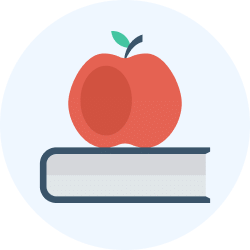Year 2 Exam > Year 2 Notes > Year 2 Science (Cambridge) > Flashcards: Forces and Movement
Flashcards: Forces and Movement | Year 2 Science (Cambridge) PDF Download
| Download, print and study this document offline |
Please wait while the PDF view is loading
Page 1 A force is an interaction between objects that causes them to move. Forces can be a push or a pull. Page 2 A force is an interaction between objects that causes them to move. Forces can be a push or a pull. Push Forces Page 3 A force is an interaction between objects that causes them to move. Forces can be a push or a pull. Push Forces A push force moves objects away from you. Page 4 A force is an interaction between objects that causes them to move. Forces can be a push or a pull. Push Forces A push force moves objects away from you. Examples of Push Forces Pushing a shopping trolley. Pushing a volleyball to pass or score. Page 5 A force is an interaction between objects that causes them to move. Forces can be a push or a pull. Push Forces A push force moves objects away from you. Examples of Push Forces Pushing a shopping trolley. Pushing a volleyball to pass or score. Pull ForcesRead More
|
6 videos|13 docs|6 tests
|
FAQs on Flashcards: Forces and Movement - Year 2 Science (Cambridge)
| $1. What are the different types of forces that can affect movement? |  |
| $2. How does friction influence the motion of an object? |  |
Ans. Friction is a force that opposes the relative motion of two surfaces in contact. It can slow down or stop the movement of an object. The amount of friction depends on the nature of the surfaces and how hard they are pressed together. For instance, rough surfaces create more friction than smooth surfaces, making it harder for objects to slide over each other.
| $3. What is Newton's First Law of Motion? |  |
Ans. Newton's First Law of Motion states that an object at rest will remain at rest, and an object in motion will continue moving at a constant velocity, unless acted upon by a net external force. This law highlights the concept of inertia, which is the tendency of objects to resist changes in their state of motion.
| $4. How can we calculate the net force acting on an object? |  |
Ans. To calculate the net force acting on an object, you need to consider all the individual forces acting on it and their directions. If forces are in the same direction, you add their magnitudes. If they are in opposite directions, you subtract the smaller force from the larger one. The resulting force is the net force, which determines the object's acceleration according to Newton's Second Law.
| $5. What factors affect the acceleration of an object? |  |
Ans. The acceleration of an object is affected by the net force acting on it and its mass. According to Newton's Second Law of Motion, acceleration is directly proportional to the net force and inversely proportional to the mass of the object (a = F/m). This means that a larger force will result in greater acceleration, while a larger mass will result in less acceleration for the same force.
Related Searches
























